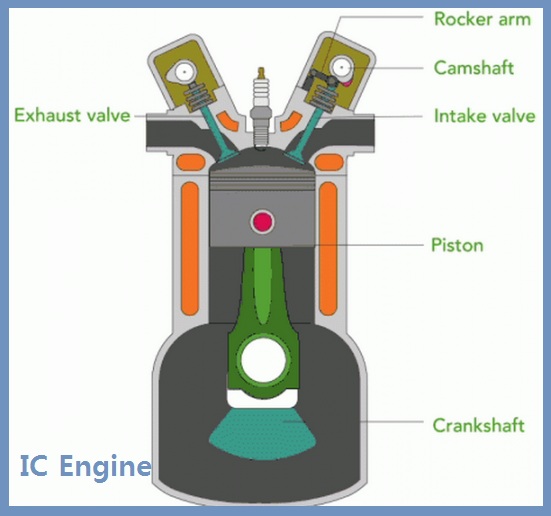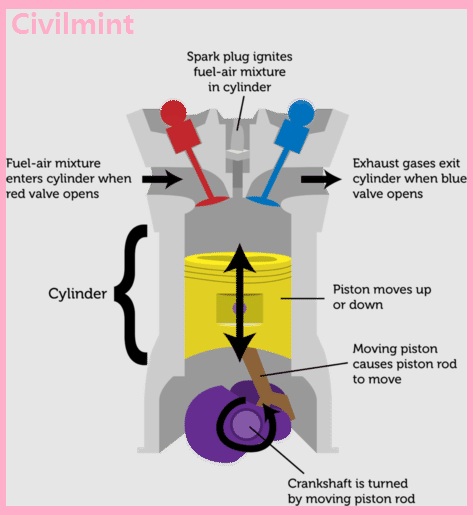The internal combustion engine is a very popular engine in which the fuel combustion process takes place inside the engine cylinder. Internal combustion engines can use gasoline, diesel fuel, hydrogen, methane, and propane gas fuel as a working fluid.
Internal combustion engines use the energy supplied in the form of an air-fuel mixture to carry out the combustion process in the combustion chamber.

When the mixture burns in the engine cylinder, high and high-pressure forces are generated that act on the engine pistons to create useful work. When a force acts on the piston, the piston moves back and forth, converting the chemical energy of the fuel into mechanical energy and moving the vehicle.
Power is distributed to the drive shaft via the connecting rod and crankshaft motor. The intake and exhaust valves control the flow of working fuel and exhaust gas to and from the engine.
The internal combustion engine can supply 10W of electricity at 20x103kW. The power of the IC is 1000W, and the heating power is about 2500W.
Most internal combustion engines are designed for vehicle applications and require an output of approximately 102kW.
Combustion engines have higher thermal efficiency than external combustion engines. The thermal efficiency of an internal combustion engine is between 35% and 45%.
The petrol engine, diesel engine, 2-stroke engine, 4-stroke engine, CI engine, and SI engine are examples of internal combustion engines. Internal combustion engines are most commonly used in motorcycles, cars, buses, vans, trucks, tractors, and generators.
Working Concept of IC Engine
Here I have described the complete step-by-step working process of an IC engine.
- The air-fuel mixture is drawn into the cylinder through the valve and the valve closes.
- The piston in the cylinder rises and compresses the air-fuel mixture in the closed cylinder.
- The mixture is now under a lot of pressure and is very warm.
- Sparks from spark plugs ignite the air-fuel mixture and burn explosively within the limited space of a closed cylinder.
- The pressure of the hot combustion gas pushes the piston down.
- The piston returns up and pushes the exhaust gas out of the cylinder through another valve.
- The piston returns down and the cycle repeats.

Wrap Up
A combustion engine is a complex machine that burns fuel to generate thermal energy and uses that energy to do its job. Internal combustion engines burn fuel internally or in the engine. In an internal combustion engine, the air-fuel mixture burns in a closed cylinder, causing the piston to move up and down. In automobiles, the movable piston rotates the crankshaft, and the crankshaft rotates the drive shaft. The rotating drive shaft rotates the wheels of the car.
